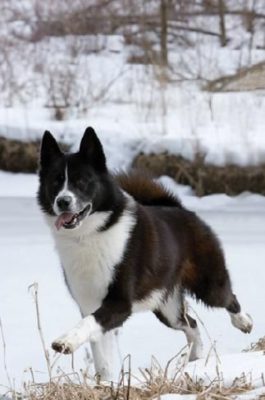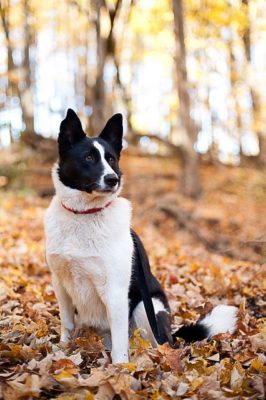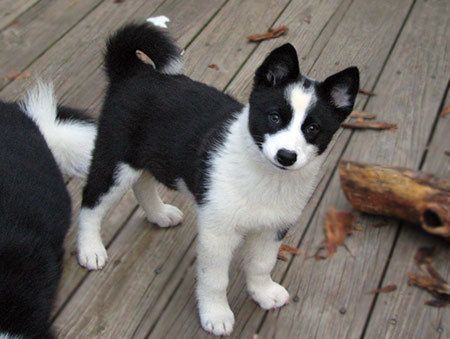Karelian Bear Dog

The Karelian Bear Dog, typical of the true hunting breed, is good outdoors and on assignment. They are best able to remain physically and mentally active. They tolerate physical activity well and are in no way suited to a quiet domestic lifestyle. While potentially aggressive if they feel threatened by another animal, they can coexist peacefully with other pets with proper training and proper socialization. Indeed, they are a social breed and enjoy the company of other dogs they are familiar with.
Table of Contents
Breed Information
| Another Name | Karjalankarhukoira, Karelsk Björnhund |
| Origin | Finland |
| Height | 48-58 cm |
| Weight | 20-23 kg |
| Fur | Medium length |
| Color | Black, black and white |
| Lifespan | 10-12 years |
| FCI Classification | Spitz and primitive types |
| Group | Hunting dogs, dogs for children |
| Price | $1000-1500 |
Breed Photos
Origin History
The Karelian Bear Dog is a Finnish breed that originated in northwestern Europe and was originally the dog of Russian and Finnish peasants, used for hunting and as a guard dog. Only the toughest survived the battles and harsh hunting conditions. The ancestors of Karelian huskies had red, red-gray, and black-and-white fur. The main breeding dogs came from Lago Karelia, Olonetsk, and Russian Karelia, where they were used for all kinds of game hunting. Breeding began in 1936 to create a sturdy dog that barks at a big game.
The offspring were chosen by the type Karelian Bear Dog during further breeding, and only black and white dogs were selected for breeding. It was then decided that the name of the breed was the Karelian Bear Dog. The first standard was set in 1945. The first Karelian Bear Dogs were registered with the Finnish Kennel Club in 1946.
Today this breed is one of the ten most common in Finland. The Karelian Bear Dog is primarily a hunting breed, but it can be trained and participate in search and rescue trials and sled dog competitions in its native country.
Appearance
The Karelian Bear Dog is a medium-sized, stout, Spitz-like dog with a triangular head, pointed ears, and a stiff straight black or black-and-white coat of medium length. This breed also has a thick undercoat. The body’s length from the point of the buttocks to the point of the sternum is slightly longer than the height of the dog. The husky tail is presented as a fluffy curl on the back, although a short tail is allowed.
Character
The Karelian Bear Dog, typical of the true hunting breed, is good outdoors and on assignment. They are best able to remain physically and mentally active. They tolerate physical activity well and are in no way suited to a quiet domestic lifestyle. While potentially aggressive if they feel threatened by another animal, they can coexist peacefully with other pets with proper training and proper socialization. Indeed, they are a social breed and enjoy the company of other dogs they are familiar with.
The Karelian Bear Dog is excellent for use as a guard dog because it is innately vigilant and barks loudly to inform its owner of an intruder. Because of this dog’s strength and its natural tendency to hunt, as well as its need for plenty of stimulation and activity, this breed is only recommended to an experienced owner who has enough time and energy to raise his pet.
Care
Karelian Bear Dogs tend to molt, and they molt more when their seasonal coat comes off twice a year. Weekly brushing should be enough to comb out the dead hair and keep it under control. Periodic bathing or bathing as needed should be enough, as most Karelian Bear Dogs do not have the usual “dog smell.”
Strong, fast-growing nails should be trimmed regularly with nail clippers or a grinder to avoid overgrowth, splitting, and cracking. Their ears should be checked regularly to avoid wax buildup and debris that can lead to infection. Their teeth should be brushed regularly.
Training
This dog needs a trainer with natural authority. Training should be very consistent with both a firm hand and affection. Exercise options should include playing in the backyard, preferably fenced in, or walking several times a day. Exercise can also be in indoor activities such as hide-and-seek, chasing a ball rolling on the floor, or learning new tricks.
Certain outdoor activities such as swimming, hiking, and looking for balls or flying disks can be a good outlet for energy expenditure. If you live in an apartment, even short walks down the hall can give your dog an energy boost, especially in inclement weather. Training for dog sports such as agility, obedience, and rallying can also be a great way to exercise your husky.
Common Diseases
They are a very healthy breed that rarely undergoes any diseases. However, they may be prone to hip dysplasia or eye problems. It is important for owners to monitor these conditions and make regular visits to the veterinarian to identify and address any health problems.
Nutrition
Despite its increased activity, the Karelian husky eats little compared to other breeds. It will eat as much as it needs, neither more nor less. When choosing a diet, this must be taken into account, making the pet’s menu more calorie-dense. More calories will also be needed during the cold season and during the hunting season when the dog wastes more energy.
If the owner decides to opt for natural food, the diet should be balanced so that 50% is meat, a protein source. The remaining 50% includes cereals to replenish the energy balance; fruits and vegetables are the primary sources of minerals and vitamins; by-products – liver, rumen, heart; dairy products – cottage cheese, sour cream, kefir, yogurt.
It is strictly forbidden to feed the Karel from your table. Also, it would help if you did not pamper your pet with all kinds of treats and spices; the latter contributes to reducing olfactory functions, which is not at all desirable for hunting dogs.
Feed your puppy twice a day, preferably in the morning and evening hours. But puppies are fed at least four times a day. Otherwise, the ration for puppies and adults is practically the same, except for the predominance of fermented dairy products for babies.
 Miniature Pinscher
Miniature Pinscher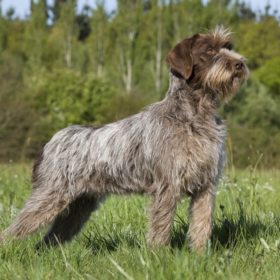 Wirehaired Pointing Griffon
Wirehaired Pointing Griffon Pražský Krysařík
Pražský Krysařík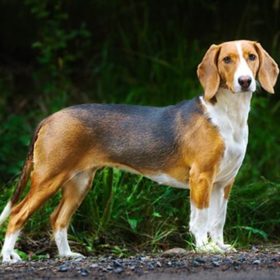 German Hound
German Hound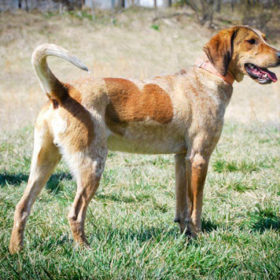 American English Coonhound
American English Coonhound Soft-coated Wheaten Terrier
Soft-coated Wheaten Terrier